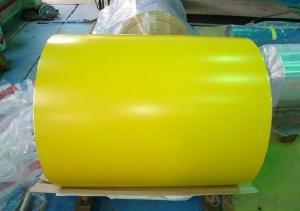Ti Solar Inverter
Ti Solar Inverter Related Searches
Best Inverter Solar Panel Solar Panel On Roof Rack Inverter To Solar Panel Ratio Solar Panel Decking Lights Solar Panel Inverter Box 1000 Watt Solar Panel Inverter 12 Volt Solar Panel Inverter Plastic Solar Lanterns Buy Solar Panel Inverter Solar Panel Inverter CostHot Searches
Type Of Inverter For Solar Types Of Inverter For Solar Used Solar Inverter For Sale Inverter Size For Solar System Solar Edge Inverter For Sale 5kw Solar Inverter For Sale Solar Inverter For Sale Solar Inverter For Battery Solar Inverter For Split Ac Solar Inverter For Laptop Solar Inverter For Fridge Solar With Inverter Price Solar Inverter With 2 Battery Solar Inverter Price In China Best Solar Inverter In China Solar Inverter Price In Dubai Solar Inverter Price In Uae Solar Inverter Price In Kenya Solar Inverter Price In Kerala Solar Hot Water Collectors For SaleTi Solar Inverter Supplier & Manufacturer from China
Okorder.com is a professional Ti Solar Inverter supplier & manufacturer, offers integrated one-stop services including real-time quoting and online cargo tracking. We are funded by CNBM Group, a Fortune 500 enterprise and the largest Ti Solar Inverter firm in China.Hot Products
FAQ
- Yes, a solar inverter can be used with solar-powered agricultural equipment. A solar inverter is an essential component in a solar power system as it converts the DC (direct current) electricity generated by solar panels into AC (alternating current) electricity that can be used to power various equipment, including agricultural machinery.
- A solar inverter handles shading or partial panel obstructions by employing a technique called maximum power point tracking (MPPT). MPPT allows the inverter to constantly monitor the output of each individual solar panel and adjust its operating conditions to maximize power production. When shading or partial obstructions occur, the inverter intelligently redistributes the power flow to avoid any significant drop in overall system performance. This ensures that the panels operate at their optimal efficiency, even under less than ideal conditions.
- Yes, a solar inverter can be used with a solar-powered water pump. The solar inverter converts the DC power generated by the solar panels into AC power, which is suitable for powering the water pump. This allows for efficient and reliable operation of the pump using solar energy.
- Solar inverters come with electromagnetic interference (EMI) concerns. They convert the direct current (DC) produced by solar panels into alternating current (AC) for powering homes and businesses. This conversion process involves high frequency switching, which can generate EMI. EMI refers to the disturbance caused by electromagnetic radiation emitted by electronic devices. It can interfere with the proper functioning of nearby electronic devices. In the case of solar inverters, the EMI generated can potentially impact radios, televisions, and communication systems. To address these concerns, solar inverter manufacturers typically comply with relevant EMI standards and regulations. This may involve limiting the amount of electromagnetic radiation emitted by the inverters and using shielding materials to reduce EMI. Some inverters also incorporate filters or other techniques to suppress EMI and minimize interference. When selecting and positioning solar inverters, solar installers and system designers should consider EMI concerns. Proper installation and grounding techniques can help decrease EMI issues. It is also important to follow local regulations and guidelines to ensure compliance with EMI standards and minimize potential interference with other electronic devices. Overall, although EMI concerns exist with solar inverters, proper design, installation, and adherence to relevant standards can effectively mitigate these concerns. This ensures the smooth operation of both the solar system and other electronic equipment in the area.
- The quality of the AC waveform directly affects the performance of a solar inverter. A clean and stable waveform is essential for efficient and reliable operation of the inverter. Any deviations, distortions, or harmonics in the waveform can lead to increased power losses, reduced conversion efficiency, and potential damage to the inverter. Therefore, a high-quality AC waveform is crucial for optimal performance and maximum power output from a solar inverter.
- Yes, a solar inverter can be used with solar-powered outdoor lighting. The solar inverter is responsible for converting the direct current (DC) produced by the solar panels into alternating current (AC) that is suitable for powering outdoor lighting fixtures. By using a solar inverter, the solar energy collected during the day can be efficiently utilized to power outdoor lighting systems during the night.
- The maximum DC input voltage for a solar inverter typically depends on the specific model and manufacturer. However, in general, most solar inverters have a maximum DC input voltage ranging from 600 to 1000 volts.
- MPPT technology, or Maximum Power Point Tracking, is utilized in solar inverters to optimize the energy output of photovoltaic systems. It works by continuously tracking the maximum power point of the solar panel array, which is the voltage and current combination that allows the panels to generate the maximum power. The MPPT algorithm adjusts the operating voltage and current of the solar panels to match the optimal point, ensuring that the maximum amount of power is extracted from the solar array and converted efficiently by the inverter. By constantly adapting to changing environmental conditions, MPPT technology maximizes the solar energy harvest, improving system efficiency and overall performance.















































